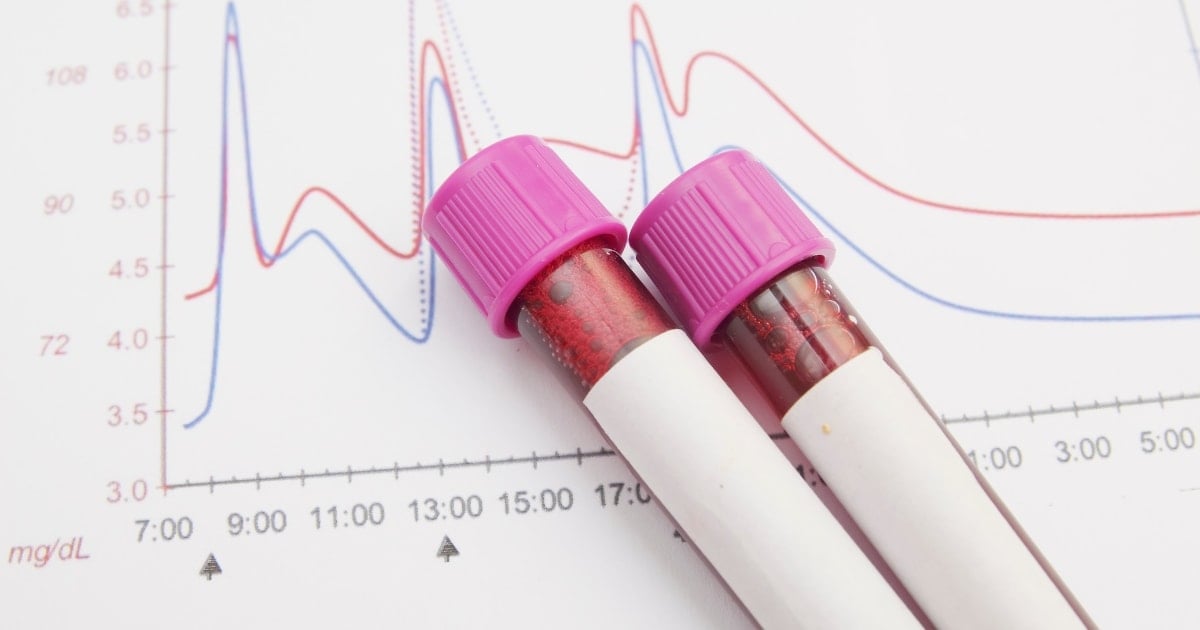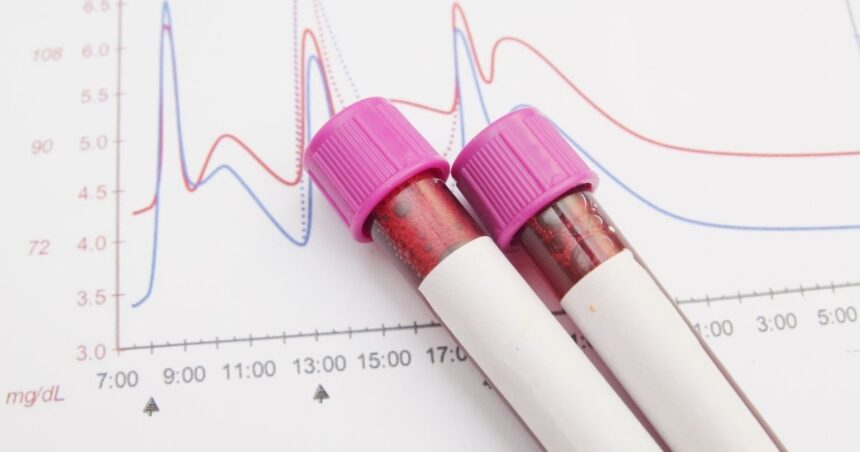Understanding what your blood sugar ranges are and what’s thought-about “regular” could be complicated, particularly if in case you have diabetes.
Blood glucose targets, or targets, can range for everybody, and will range on occasion to make it much more sophisticated.
This text will provide help to perceive the goal blood glucose and A1C ranges in each folks, with or with out diabetes.
Blood glucose and A1C chart: regular and diabetic blood glucose vary
study extra: What’s regular blood sugar?
What’s blood sugar?
Blood glucose, also referred to as blood glucose, is sugar discovered within the blood. Such a sugar is the principle supply of power or gasoline for the physique. It is usually the principle supply of power within the mind.
Once you eat, your physique breaks down carbohydrates (carbohydrates) in your meals into glucose, which is launched into the bloodstream. As glucose ranges within the blood start to rise, the pancreas releases the hormone insulin and travels to cells that use glucose for power.
How is blood sugar ranges managed in individuals who shouldn’t have diabetes?
In individuals who don’t endure from diabetes, blood glucose ranges are very carefully managed within the physique by two hormones: insulin and glucagon. Extra glucose within the blood is saved as liver glycogen.
In case your physique wants further glucose for gasoline, for instance, when you want gasoline in a single day whereas exercising or sleeping, glucagon will inform your liver and launch glucose into the bloodstream. From there, insulin helps transfer that glucose into cells and use it for power.
Why are diabetes and blood sugar ranges vital?
With diabetes, blood sugar ranges could also be too excessive. Within the case of kind 1 diabetes, the pancreas both produces or produces little or no insulin. Consequently, glucose from the blood can not enter the cells to be used in power. In kind 2 diabetes, cells within the physique don’t reply very effectively to insulin. Moreover, the pancreas stops producing sufficient insulin to control blood glucose.
Hyperglycemia known as hyperglycemia. If left untreated over time, this situation can result in critical problems. These embody:
Different issues attributable to hyperglycemia embody foot issues, periodontal illness, pores and skin issues, and listening to loss.
Quick-term, untreated hyperglycemia may cause probably life-threatening problems corresponding to:
In both case, instant therapy is required.
Fasting blood sugar
Fasting blood glucose is the extent of blood glucose measured or checked after fasting. “Fasting” means not consuming or consuming something besides water for no less than eight hours.
When you’ve got diabetes and verify your blood glucose degree with a blood glucose meter, your well being care supplier might ask you to verify your fasting blood glucose degree. Relying in your sleep schedule, that is the primary blood sugar verify you do after you get up, earlier than consuming breakfast or consuming morning espresso.
For most individuals with diabetes, the aim is fasting blood glucose between 80 and 130 mg/dL. Fasting blood glucose ranges in individuals who don’t endure from diabetes must be between 70 and 99 mg/dL.
Fasting blood glucose above 130 mg/dL means sure hormones have too excessive blood glucose (known as the daybreak phenomenon). Different potential causes of excessive fasting blood glucose embody not having insulin or rebound hyperglycemia after present process hypoglycemia in the midst of the evening.
Fasting blood glucose under 80 mg/dL means you take too many diabetic medicines (together with insulin). One other trigger could also be insufficient, being extra energetic than regular, or consuming alcohol with out consuming.
Blood sugar after meal
Meals has a big effect on blood sugar ranges, so if in case you have diabetes, it may be useful to verify your blood sugar ranges after meals. That is known as post-meal or post-meal blood glucose checking and is meant to seize the “peak” or highest blood glucose degree after consuming.
The American Diabetes Affiliation (ADA) proposes a goal under 180 mg/dL for many non-pregnant adults 1-2 hours after the onset of a meal. For folks with out diabetes, blood glucose ranges normally stay under 140 mg/dL.
Blood glucose ranges above 180 mg/dL after consuming usually imply that your weight loss plan could also be too carbohydrate. For instance, a pasta and Italian bread dinner is extra more likely to trigger post-meal glucose “spikes” in comparison with a meal of grilled fish, greens and brown rice. Nonetheless, excessive blood sugar ranges after lactose may also happen as a result of:
- Neglect to take your diabetes medicine
- Not taking adequate diabetes medicine
- Feeling unwell or nerve-racking
- Not doing regular ranges of bodily exercise
If the trigger could be decided, occasional hyperglycemia after meals is regular. Nonetheless, repeated post-pregnancy glucose ranges may cause concern and will point out the necessity to scale back carbohydrates or begin or regulate diabetes medicine.
Excessive blood sugar ranges
In folks with diabetes, hyperglycemia is normally thought-about to be blood glucose above 180 mg/dL 1-2 hours after consuming.
In case your blood glucose degree exceeds 180 mg/dL, signs of hyperglycemia can happen. These embody feeling thirsty, needing frequent urination, fatigue, irritability, and blurry imaginative and prescient. Many individuals with diabetes begin to expertise signs of hyperglycemia when their blood sugar ranges attain 250 mg/dL, which might range from individual to individual.
Blood glucose ranges reaching 400 mg/dL or larger might point out the danger of the 2 critical situations talked about above.
DKA is extra frequent in folks with kind 1 diabetes, however may also have an effect on folks with kind 2 diabetes. Excessive blood sugar and elevated ketones (chemical substances produced by the liver when fats breaks down), speedy respiration, fruity-scented respiration, nausea, vomiting, and abdomen ache can seem.
DKA might quickly turn out to be a medical emergency. Therapy contains intravenous administration of insulin, in addition to hospitalization changing fluids and electrolytes.
HHS is a complication of kind 2 diabetes, indicating very excessive blood sugar ranges, excessive dehydration, lowered arousal, and even lack of consciousness. Therapy focuses on hospitalization, appropriate dehydration, substitute electrolytes, and insulin intravenously administered.
See extra particulars: What is taken into account hyperglycemia?
Hypoglycemia ranges
Blood glucose ranges fluctuate all through the day in each folks, with or with out diabetes. For folks with diabetes, the final aim is to purpose to maintain blood sugar ranges between 80 mg/dL and 180 mg/dL (or the vary really helpful by the medical crew).
Generally blood sugar ranges get too low, under 70 mg/dl. That is known as hypoglycemia. You might have signs that warn you of hypoglycemia, corresponding to feeling unstable or a lightweight head.
Not everybody has signs when they’re low, so frequent blood glucose ranges in meters, or, if potential, use CGM (steady glucose monitoring) to assist establish when glucose ranges are too low and too low. If this happens, low carbohydrate sources must be handled to lift blood sugar ranges to a secure degree.
A too low blood sugar degree (normally under 54 mg/dl) known as extreme hypoglycemia, that means that you just need assistance from somebody who might help deal with and get better from the low ones. Extreme hypoglycemia can result in a threat of fainting. If blood sugar ranges are too lengthy or too low, it might probably result in seizures, coma, and barely demise. Therapy might embody administration of glucagon by injection or inhalation, or intravenous glucose.
learn extra: What is taken into account hypoglycemia?
Particular person blood glucose targets
The glucose objectives listed within the desk above are usually not essentially acceptable for all folks with diabetes. Actually, the ADA strongly recommends adjusting glucose targets as wanted primarily based on particular components. These embody:
- yr: Aged folks with purposeful or cognitive disabilities, or very younger youngsters, may have larger glucose objectives for security and ease. Nonetheless, younger adults with no problems of diabetes might profit from decrease glucose objectives.
- Well being standing: Folks with restricted common life expectancy or restricted sure medical situations usually have larger glucose targets.
- Threat of hypoglycemia: People who find themselves not conscious of hypoglycemia (can not detect early indicators of hypoglycemia) or who’ve extreme hypoglycemia might have excessive blood glucose ranges.
- Pregnant ladies with diabetes: Glucose objectives are usually a lot more durable earlier than and through being pregnant, and assist to reduce maternal and child problems.
Speak to your healthcare supplier about your glucose objectives and what is sensible to you.
A1C Objectives
The A1C take a look at is a blood take a look at that measures the typical quantity of glucose in your blood for the previous 2-3 months. The outcomes of this take a look at are measured as percentages. Different phrases for A1C are hemoglobin A1C, HBA1C, glycate hemoglobin, and glycosylated hemoglobin.
The A1C take a look at is commonly used to diagnose pre-diabetes or diabetes, however it is usually an vital take a look at that may provide help to and your medical crew handle your diabetes. The upper the A1C degree, the upper the danger of growing problems.
Based on the ADA, the frequent goal for A1C in most individuals with diabetes is lower than 7%. For folks with out diabetes, the goal is under 5.7%. A1Cs of 5.7% to six.4% point out prediabetics. It is a situation by which blood sugar ranges are larger than regular, however not so excessive that it’s thought-about kind 2 diabetes.
Prediabetes means that you’re at a excessive threat of growing kind 2 diabetes. Happily, way of life modifications can forestall or delay kind 2 diabetes and different critical issues.
Folks with diabetes normally verify A1C 2-4 occasions a yr. If therapy objectives are met, A1C checks are adequate twice a yr. Nonetheless, if therapy objectives are usually not met or therapy plans have modified, A1C checks could also be often required.
Particular person A1C objectives
A1c under 7% will not be acceptable for everybody. The ADA states that “decrease A1C objectives are appropriate for people with restricted life expectancy and/or with vital purposeful and cognitive impairments.” For instance, an A1C aim of as much as 8% could also be really helpful for older folks or these experiencing extreme or frequent hypoglycemia.
For instance, a low A1C aim of 6.5% could also be appropriate for younger folks with much less frequent blood sugar ranges. For pregnant ladies with diabetes, if this may be achieved with out frequent hypoglycemia, the “splendid” A1C aim is lower than 6%. Collectively you and your healthcare supplier should decide the very best A1C aim for you.
Last Ideas
When you’ve got diabetes, it is very important know your blood sugar ranges and A1C targets. Your blood sugar ranges and A1C take a look at outcomes will assist you recognize when you and your healthcare crew are assembly your objectives.
Though occasional use of A1c outdoors of blood glucose ranges and goal ranges is totally regular, persistently excessive or low blood glucose ranges, or persistently excessive A1C outcomes are indications {that a} course revision of the diabetes therapy plan is being proven.
Have an open dialogue along with your physician or different members of your medical crew. Ask about glucose and A1C objectives and focus on components that may provide help to attain your goal, corresponding to medicine, weight loss plan, and bodily exercise.











